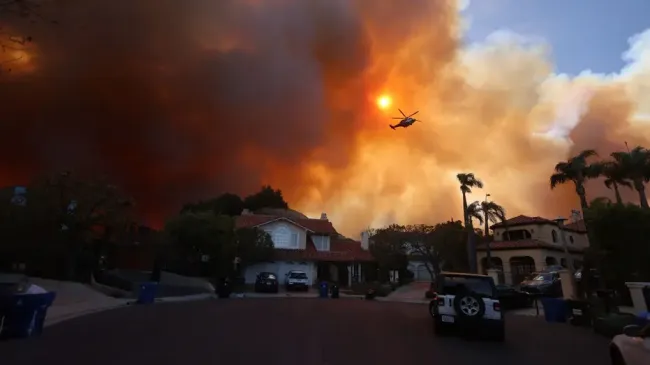California Wildfires Update: Malibu, Santa Monica, Pasadena, and Palisades Fires – Latest Maps and Details
Wildfires devastate Southern California, burning 27,000+ acres, destroying 2,000 structures, and forcing 150,000 evacuations. The Palisades, Eaton, and Hurst Fires, fueled by extreme winds and drought, remain largely uncontained, with hazardous air quality and widespread destruction.
Overview of the Wildfires
The Southern California region is currently battling multiple wildfires, with the Palisades Fire, Eaton Fire, and Hurst Fire being the most destructive. These fires have been fueled by extreme Santa Ana winds, dry conditions, and a prolonged drought, making containment efforts extremely challenging. The fires have collectively burned over 27,162 acres, destroyed more than 2,000 structures, and forced the evacuation of over 150,000 residents.
Key Fires and Their Impacts
- Palisades Fire
- Location: Pacific Palisades and Malibu, Los Angeles County.
- Size: Over 15,832 acres burned as of January 8, 2025.
- Destruction: More than 1,000 structures destroyed, making it the most destructive wildfire in Los Angeles history.
- Evacuations: Over 40,000 residents under mandatory evacuation orders.
- Notable Losses: Palisades Charter High School, Reel Inn restaurant, Will Rogers’ historic ranch house, and several celebrity homes, including those of Mandy Moore, Paris Hilton, and Billy Crystal.
- Eaton Fire
- Location: Altadena and Pasadena.
- Size: 10,600 acres burned.
- Destruction: Over 100 structures destroyed, including the Pasadena Jewish Temple & Center.
- Casualties: Five fatalities reported, with multiple injuries.
- Hurst Fire
- Location: San Fernando Valley.
- Size: Approximately 850 acres burned.
- Impact: Evacuations in Sylmar and surrounding areas, with significant threats to residential neighborhoods.
Evacuations and Displacement
- Over 150,000 residents have been evacuated across Los Angeles County, with many fleeing on foot due to gridlocked roads.
- Evacuation zones have expanded to include parts of Santa Monica, Hollywood Hills, and Pasadena.
- Senior living centers and schools have been evacuated, with some residents forced to wait in parking lots for transport.
Response Efforts
- Firefighting Resources: More than 1,400 firefighters are deployed, with additional support from Arizona, Nevada, Oregon, and Washington.
- Challenges: High winds have grounded firefighting aircraft, and water shortages have hampered efforts. Fire hydrants in some areas ran dry due to overwhelming demand.
- Federal Assistance: President Joe Biden declared a federal disaster, unlocking FEMA funds and resources.
Health and Environmental Impacts
- Air Quality: Smoke and ash have blanketed Southern California, with air quality indices reaching hazardous levels (over 500 in some areas).
- Health Risks: Vulnerable populations, including children and the elderly, are at risk of respiratory and cardiovascular issues due to prolonged exposure.
- Climate Context: The fires are exacerbated by an eight-month drought and record-breaking Santa Ana winds, with gusts exceeding 100 mph.
Economic and Cultural Losses
- Economic Damage: Preliminary estimates suggest the Palisades Fire alone could cost between 52billionand52billionand57 billion, making it the costliest wildfire in U.S. history.
- Cultural Impact: Historic landmarks, including Will Rogers’ ranch house and the Theatre Palisades, have been destroyed.
Future Risks and Warnings
- Weather Conditions: Red flag warnings remain in effect, with strong winds and low humidity expected to persist through January 11.
- Potential for New Fires: The dry, windy conditions increase the risk of additional fires breaking out in the region.
Conclusion
The Southern California wildfires represent an unprecedented disaster, with widespread destruction, massive evacuations, and significant health and economic impacts. The combination of extreme weather, prolonged drought, and challenging terrain has made containment efforts difficult, and the situation remains fluid. Residents are urged to stay informed through local authorities and take necessary precautions to protect their health and safety.
